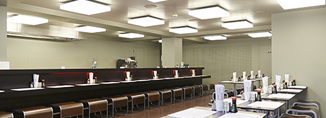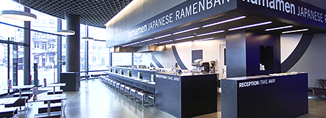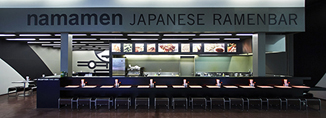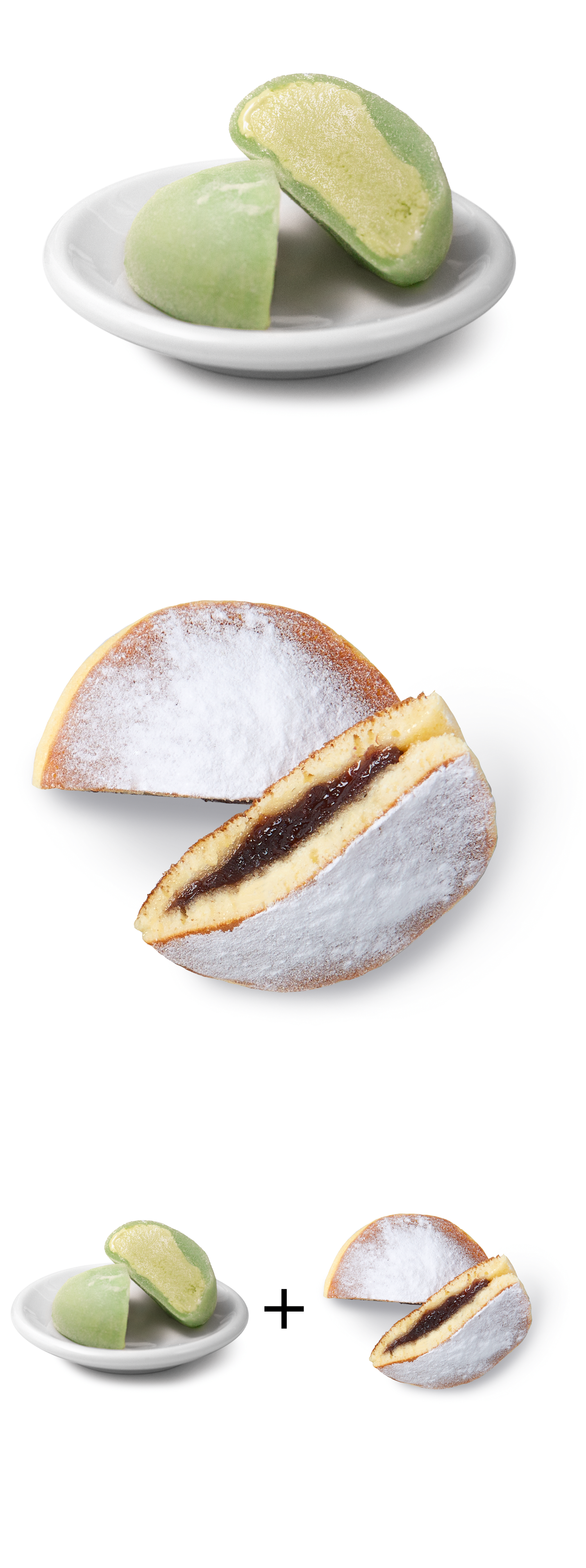We love ramen.
We love design.
And we love connecting people and cultures.
Say no more, let the images speak for themselves:
Wir freuen uns über die vielen positiven Feedbacks aus aller Welt!
Leider fehlt uns oft einfach die Zeit zum Antworten. Doch lesen und liken wir immer wieder und möchten uns an dieser Stelle für Eure Beiträge bedanken.
Klicke hier, wenn Du uns jetzt auf Facebook besuchen willst:
 Steinenberg 1, 4051 Basel, Schweiz
Steinenberg 1, 4051 Basel, Schweiz
 Messeplatz 1a, 4058 Basel, Schweiz
Messeplatz 1a, 4058 Basel, Schweiz
 Schanzenstrasse 4, 3008 Bern, Schweiz
Schanzenstrasse 4, 3008 Bern, Schweiz
 Gilberte de Courgenay Platz 4, 3027 Bern, Schweiz
Gilberte de Courgenay Platz 4, 3027 Bern, Schweiz
Not familiar with some terms of the Japanese kitchen? Click the word and find out about it.
Fresh Japanese noodles with fine ingredients in a spicy homemade soup - that’s what our ramen is about. Pick your base and choose your ramen.
Classic, mild soy soup
Mildly spiced miso soup
Clear and mild shio soup
Hot miso soup
Vegan soup served on request.

Japanese noodles, leek,
menma, nori (also available
in small portions)
Noodles, fried dumplings (chicken or vegetables), leek, spinach, menma, nori, egg
Japanese noodles, marinated pork breast slices, leek, soy sprouts, menma, egg
Noodles, shrimp-dumplings, leek, egg, menma, corn, wakame, ginger, nori
Japanese noodles, marinated sliced ribeye steak, leek, corn, menma, nori, egg
Japanese noodles, tender chicken breast slices, leek, spinach, carrot, menma, egg
Japanese noodles, prawns, squid, mussels, leek, corn, soy sprouts, egg
Japanese noodles, leek, spinach, carrot, corn, soy sprouts, vegetarian soup
The alternative to ramen: choose between two types of traditional Japanese noodles, served with in a mild dashi soup
Thick Japanese noodles made from wheat flour
Thin Japanese noodles made from buckwheat

Japanese udon or soba noodles, leek, nori
Japanese udon or soba noodles, fried sweet tofu slices, leek, nori
Japanese udon or soba noodles, leek, spinach, carrot, corn, soy sprouts
Japanese udon or soba noodles, prawns, leek, spinach, carrot, corn, nori
Enjoy our Far Eastern tapas as a side dish along with your meal or order them individually.

Cold soybeans (or warm on request), slightly salted
Spicy marinated cabbage according to a Korean recipe
Brown seaweed, cucumber strips, white sesame, wafu salad dressing
Rice triangles, fits as side dish to any meal
Grilled tofu skewer with traditional yakitori sauce
Grilled chicken and leek skewer with traditional yakitori sauce
Grilled prawn and zucchini skewer with yakitori sauce
Pan-fried dumplings (chicken or vegetables), gyoza sauce
Rice rolls with tuna, cucumber in black sesame coat
Rice rolls with surimi, cucumber, omelet stripes
Rice rolls with smoked salmon, avocado
Fried sweet tofu pouches filled with sushi rice

Ice cream in rice dough
Warm pancake, filled with sweet azuki beans
Mochi and Dorayaki of your choice

A cool airplane carrying Japanese tapas and more is waiting for our little guests.
All noodle dishes, tapas and drinks in bottles and cans can be ordered to go.
order our fine dishes in the bern
and basel area on
Uber Eats.
Please ask our staff about Namamen giveaways: vouchers, t-shirts, sesame mills, bibs and tea glasses.
Ramen refers to a traditional Japanese noodle type. The terms «ra» and «men» mean literally «elongated pasta». In Japan they are part of the everyday cuisine. They can be served either hot or cold. A distinction is made between:
Noodles with ingredients in a hot and spicy soup
Cold noodles, garnished, with dressing (like salad)
After many years of isolation, Japan opened its ports to the global trade in 1859. Among others, many Chinese came into the country. And with them their cuisine: In the immigrant districts of the most important seaports emerged more and more Chinese noodle restaurants which were also attended with increased frequency by locals. Some Japanese opened their own noodle business. This was the birth of the ramen culture in Japan.
Ramen are spreading gradually across the country. During that process appeared at least 30 regional variations with up to 40 different ingredients. Currently there exist around 200.000 ramen shops in Japan, called ramen-ya. Most of them are little traditional family businesses- each of them with their own secret soup recipe.
In contrast to the original Chinese ramen, the noodle types udon and soba are considered to be a Japanese “invention”. Even the Statistical Office in Japan distinguishes between ramen-shops which are in the category “Chinese Restaurants” whereas udon- and soba restaurants (like sushi bars) are considered traditional Japanese cuisine.
The long, thin traditional noodle made of wheat flour and water
The thickest noodle of the Japanese cuisine, lightly salted
Buckwheat noodle, symbolizes a long life
Last, but not least: the flavors of a ramen, udon or soba meal develop best when you slurp the noodles. In Japan, loud slurping is a sign that you enjoy the meal. – And here as well.
Source: Shin-Yokohama Ramen Museum, Japan Statistical Yearbook, Wikipedia
We love ramen.
We love design.
And we love connecting people and cultures.
Say no more, let the images speak for themselves:
It is time to carry Namamen out into the world. Join us!
Join the Namamen family. We are looking for committed partners who have the necessary training and field experience and share our values. Above all: quality and hospitality.
Have you answered all the points of our profile of applicants by „yes“?
Then we look forward to your written application with CV, certificates, references and up-to-date proof of funds.
Simon Schwegler
franchising@namamen.ch
Our values and our image are just as important as a successful partnership. Therefore, we will help you as a franchisee in finding an attractive location and the interior design. You’ll also benefit from a modular furniture system and more.
Your contact person:
Simon Schwegler
mail@namamen.ch
Owner
Namamen Holding AG
Poststrasse 24
6300 Zug
mail@namamen.ch
VAT ID
CHE-114.020.498 MWST
Commercial register n°
CH-170.3.031.704-2
Content
Despite careful checks we don’t accept any liability for the content of external links. For the content of linked sites, the responsibility lies exclusively with their operators.
Website by Vanamco AG
Concept and interaction design by tricky triet